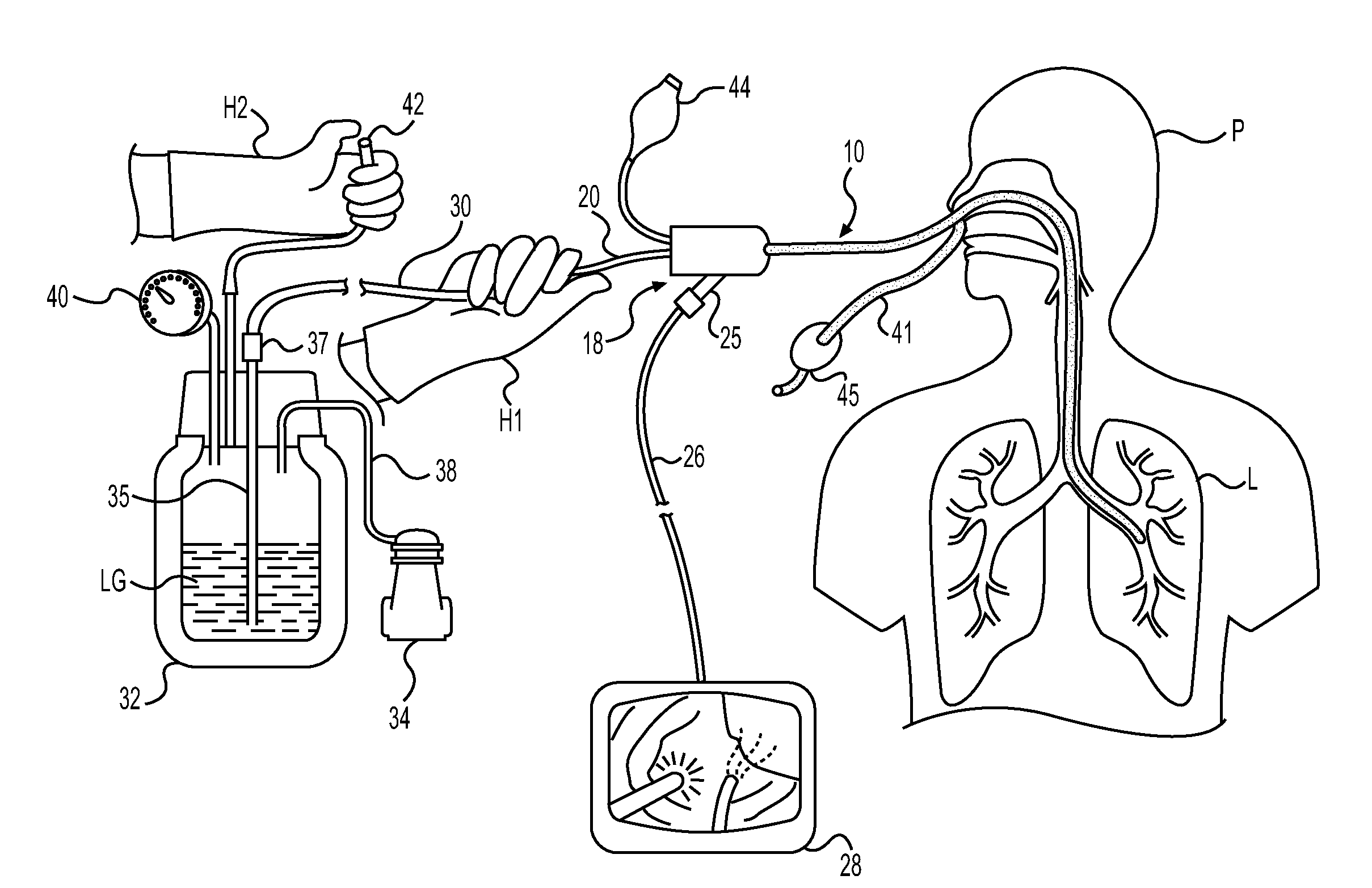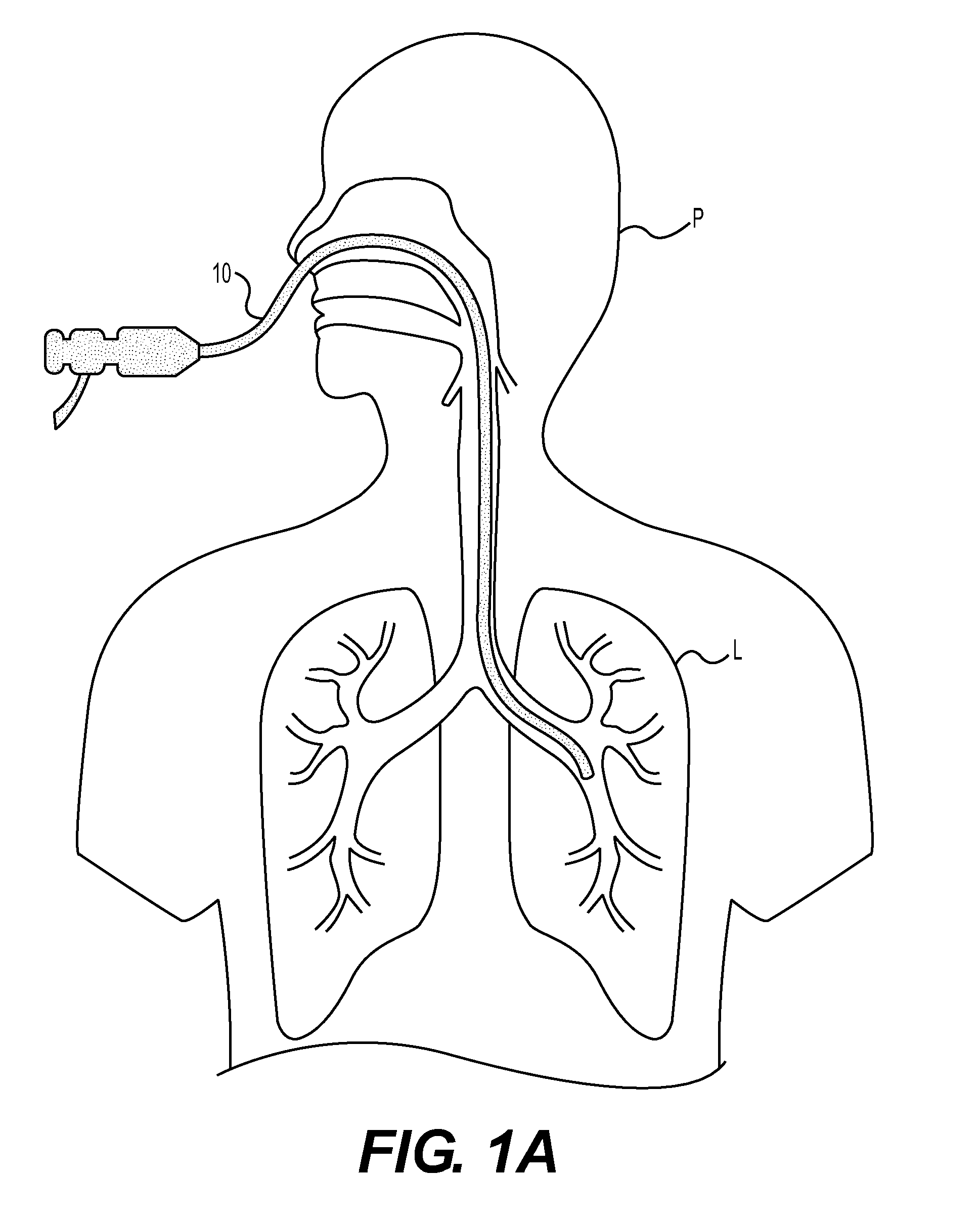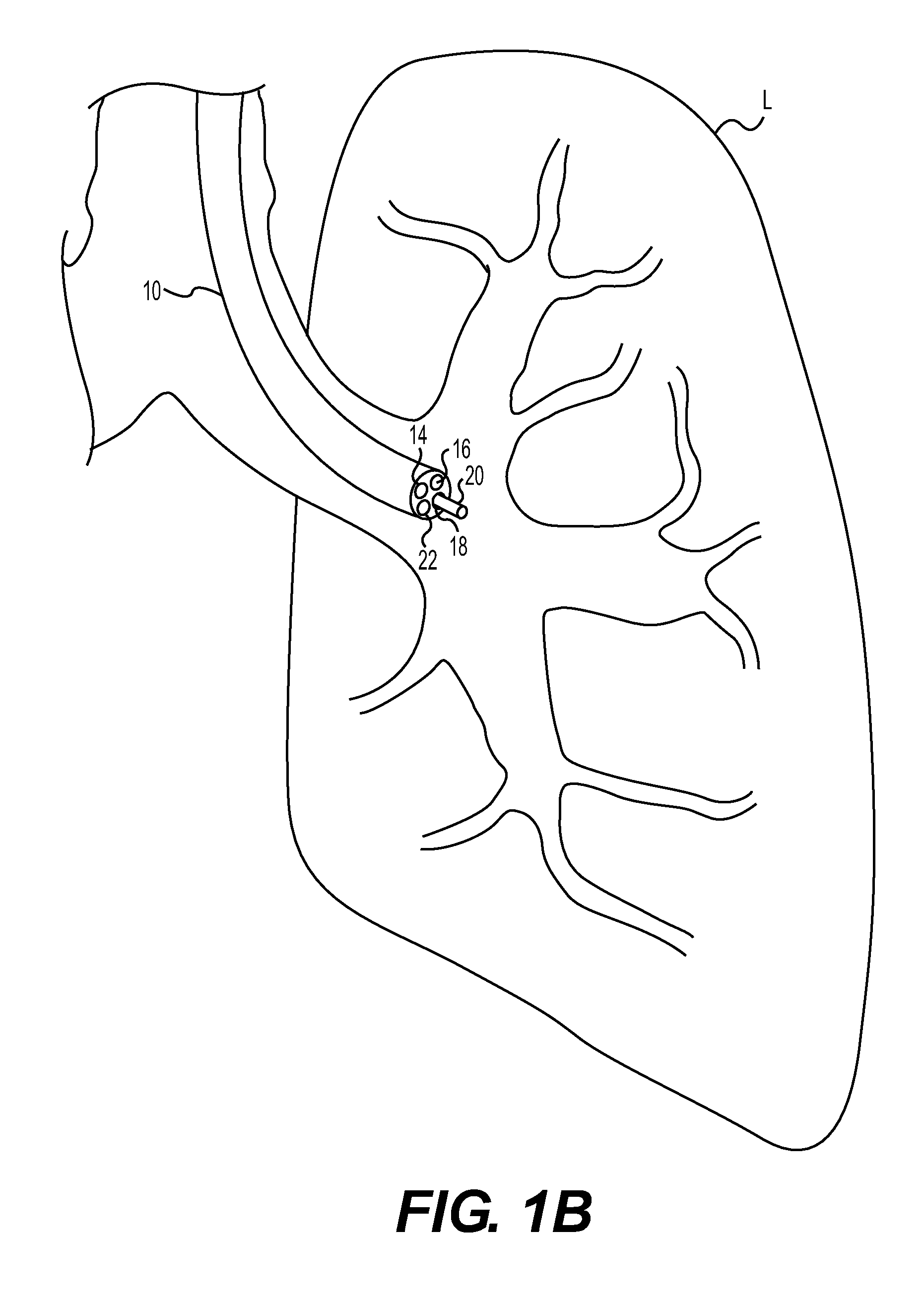Method for cryospray ablation
- Summary
- Abstract
- Description
- Claims
- Application Information
AI Technical Summary
Benefits of technology
Problems solved by technology
Method used
Image
Examples
example 1
CryoSpray Ablation of Swine Airway
[0301]A first study was performed to assess the efficacy and safety of this utilizing cryospray ablation in the airway of a swine. Using a straight tip catheter cryospray ablation was initiated multiple times in the primary bronchus. The swine was monitored continuously for respiratory conditions such as barotrauma via fluoroscopy. Bleeding was manually stimulated via a biopsy forceps injury to assess the effect of the cryospray ablation on the injury.
[0302]The entire right bronchus was treated in approximately 10 seconds. No barotrauma was seen, but slight hyperemia was noted. Following the procedure, two tissue samples were taken from the airway of the swine. A first sample was taken at thirty-five minutes post-cryospray ablation. A second tissue sample was taken at sixty minutes post cryospray ablation. Significant pathological findings in biopsies taken 35 minutes post treatment include an absence of surface mucosa, tissue consisting mostly of s...
example 2
CryoSpray Ablation of Swine Airway
[0303]In Study 2, fifteen specimens (swine) were utilized. Twelve specimens were utilized in the study to eliminate intersubject variability, while three specimens were held as replacement specimens. Each swine was male and the average weight of the test animals was one hundred fifty (150) pounds.
[0304]The twelve swine were broken down into four treatment subgroups:
[0305]GROUP 1 (3 specimens)—theoretical barotrauma limit, taken to failure (acute).
[0306]GROUP 2 (3 specimens)—these specimens were subjected to four cycles of 5 second cryospray ablation on day zero. Each of the specimens was observed and biopsied on days 2, 4, 7. The specimen was recovered on day 7. No biopsy was taken on the day of euthanization. The specimens of this group were euthanized while under general anesthesia.
[0307]GROUP 3 (3 specimens)—these specimens were subjected to four cycles of 5 second cryospray ablation on day zero. The first specimen was observed and biopsied on da...
example 3
[0321]Cryospray Ablation™ Using Surgical Resection Specimens to Determine Safety and Histological Effect in the Lung (CSAir 1).
[0322]Methods: CSA was administered in healthy airway tissue of 21 subjects during a standard bronchoscopy prior to lung resection. Group 1 (n=5) received same day therapy, Group 2 (n=2) 2-4 days, Group 3 (n=3) 5-7 days, and Group 4 (n=5) 8+ days, prior to lobectomy. All groups received 2 cycles of 5 second spray dosimetry with a 60 second interim thaw. Oxygen saturation and peak airway pressure were monitored constantly. Subjects received 100% oxygen through out the procedure. Histological inspection of the resected specimen was preformed by a blinded pathologist.
[0323]Results: No adverse events were reported. 5 of the 21 subjects did not undergo resection. Histologic examination of Groups 1 and 2 revealed loss of epithelium and muscularis mucosa, edema, and damaged sub-mucosal glands. Group 3 revealed areas of denuded mucosa at the treatment site, but show...
PUM
 Login to View More
Login to View More Abstract
Description
Claims
Application Information
 Login to View More
Login to View More - R&D
- Intellectual Property
- Life Sciences
- Materials
- Tech Scout
- Unparalleled Data Quality
- Higher Quality Content
- 60% Fewer Hallucinations
Browse by: Latest US Patents, China's latest patents, Technical Efficacy Thesaurus, Application Domain, Technology Topic, Popular Technical Reports.
© 2025 PatSnap. All rights reserved.Legal|Privacy policy|Modern Slavery Act Transparency Statement|Sitemap|About US| Contact US: help@patsnap.com



